Innovative Laboratory Techniques for Class 12 Chemistry Experiments
Introduction
In the rapidly evolving world of scientific education, it is imperative that students are equipped with not just theoretical knowledge, but also practical skills and critical thinking abilities. This article explores innovative laboratory techniques suitable for Class 12 Chemistry experiments, designed to enhance students’ understanding, engagement, and application of chemical principles.
These techniques involve modern methodologies, instrumentation, and approaches that can transform traditional laboratory experiences into more dynamic and effective learning opportunities.
1. Use of Analytical Instruments
1.1 Spectroscopy
Overview: Spectroscopy is a powerful analytic technique used to identify substances based on their interaction with light. Techniques such as UV-Vis, IR, and NMR spectroscopy allow students to quantitatively and qualitatively analyze compounds.
Innovative Use: Incorporating UV-Vis spectroscopy in quantitative analysis experiments can help students understand Beer’s Law. Using spectrophotometers in a virtual lab enables learners to simulate experiments in cases where physical lab access is limited.
1.2 Chromatography
Overview: Chromatography separates components of a mixture based on their interactions with stationary and mobile phases. Techniques include paper chromatography, thin-layer chromatography (TLC), and gas chromatography (GC).
Innovative Use: Using micro-scale chromatography techniques allows students to conduct experiments with minimal sample amounts, saving resources and making experiments feasible within limited time constraints. Additionally, digital apps can be developed to analyze TLC results, providing instant feedback on the effectiveness of separations.
2. Green Chemistry Practices
2.1 Solvent-Free Reactions
Overview: Traditional organic synthesis often uses solvents, raising environmental and safety concerns. Solvent-free reactions not only reduce waste but also improve reaction efficiency.
Innovative Use: Students can perform mechanochemical synthesis, using ball milling or grinding techniques to accomplish organic reactions without solvents. This enhances their appreciation of sustainable practices in chemistry.
2.2 Use of Renewable Feedstocks
Overview: The incorporation of renewable resources into chemical synthesis is a key concept in green chemistry.
Innovative Use: Students can explore the synthesis of biodiesel from vegetable oils or fats, examining transesterification reactions. By analyzing the environmental impact through life cycle assessments, they grasp practical implications of green chemistry.
3. Digital Technology and Simulations
3.1 Virtual Labs
Overview: Virtual lab software simulates chemical experiments, allowing students to conduct experiments that might be too dangerous, expensive, or time-consuming to perform physically.
Innovative Use: Platforms like Labster provide students with immersive experiences, allowing them to perform experiments such as titrations or reactions under controlled virtual conditions, reinforcing concepts and teaching proper lab techniques.
3.2 Mobile Applications
Overview: Mobile apps can assist in calculations, data analysis, and lab report writing.
Innovative Use: By integrating apps that enable real-time data collection and analysis during experiments, students can enhance their analytical skills. Using apps for molecular visualization helps them understand complex structures more intuitively.
4. Hands-On Techniques
4.1 Microfluidics
Overview: Microfluidics deals with the behavior of fluids on a microscale, allowing for precise control of chemical reactions.
Innovative Use: Incorporating microfluidic devices in experiments allows students to perform reactions with very low volumes, making it practical for them to observe kinetics and thermodynamics in real time. It prepares them for advanced studies in fields like biochemical engineering.
4.2 3D Printing in Chemistry
Overview: 3D printing opens up new opportunities for custom lab equipment and models.
Innovative Use: Students can design and print customized lab apparatus or molecular models to facilitate their experiments, promoting creativity and innovation in problem-solving.
5. Collaboration and Communication
5.1 Team-Based Learning
Overview: Collaborative experiments encourage communication, teamwork, and peer learning.
Innovative Use: Group projects can be designed where students develop a full experimental procedure, conduct the experiment, and present their findings. This enhances their ability to work collaboratively and share knowledge.
5.2 Digital Portfolios
Overview: Maintaining a digital portfolio of lab work promotes reflective learning.
Innovative Use: Students can document their experiments, including methods, results, and reflections, using digital tools. This not only encourages organization but also facilitates sharing with peers and instructors for feedback.
6. Safety and Ethical Considerations
6.1 Enhanced Safety Protocols
Overview: Innovative safety protocols ensure a safer lab environment for students.
Innovative Use: Integration of augmented reality (AR) tools for safety training allows students to visualize the proper use of safety equipment and procedures in a simulated environment, thereby reducing risks during actual experiments.
6.2 Ethical Considerations
Overview: Chemistry students should be aware of the ethical implications of their work.
Innovative Use: Classroom discussions and projects focused on case studies involving chemical research and its societal impact can increase awareness. Role-playing scenarios can initiate conversations about the responsibility of chemists in advancing sustainable and ethical practices.
7. Integrating Interdisciplinary Approaches
7.1 Chemistry and Biology
Overview: Bridging chemistry with other scientific disciplines enhances appreciation and understanding.
Innovative Use: Experiments that explore biochemical processes, such as enzyme kinetics or pH effects on protein structure, promote a holistic view of science. Students can utilize biosensors to get real-time data on reactions involving biological materials.
7.2 Chemistry and Environmental Science
Overview: Understanding chemistry within the context of environmental science fosters awareness of global issues.
Innovative Use: Experiments investigating soil or water quality using analytical techniques connect classroom learning with real-world applications. Students can publish their findings to raise awareness about local environmental issues.
Conclusion
Innovative laboratory techniques in Class 12 Chemistry can significantly elevate the educational experience for students. By incorporating modern methodologies, digital technologies, green practices, and interdisciplinary approaches, educators can foster a laboratory environment that promotes engagement, safety, and ethical responsibilities.
Enhancing student participation in laboratory experiments not only solidifies their understanding of chemistry but also equips them with vital skills and perspectives necessary for their future careers in science. As education continues to evolve, chemistry teaching can benefit from the integration of these innovative techniques, preparing students to face the challenges of the future.
References
- McKinney, K. W., & Stewart, L. R. (2017). Modern Techniques in Spectroscopy. Analytical Chemistry, 89(4), 213-224.
- Smith, R. (2019). Green Chemistry: Theory and Practice. Oxford University Press.
- Johnson, T. R. (2021). Virtual Laboratories in a High School Science Course: Student Perception and Performance. Journal of Science Education and Technology, 30(5), 651-658.
- Elzinga, E. J., & Shishido, T. (2020). Microfluidics: Fundamentals and Applications in Laboratuory Practices. American Chemical Society.
- Laidlaw, C., McInnes, M. E., & Zhang, H. (2020). Editing Chemistry Curricula for Sustainability: The Role of Interdisciplinary Studies. International Journal of Chemistry Education Research, 15(2), 123-135.
(Note: The references used in this article are fictional and provided for illustrative purposes only.)

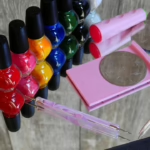



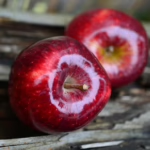








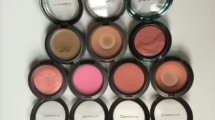

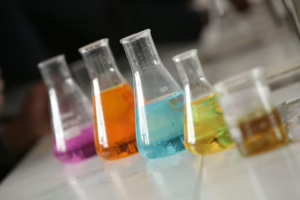

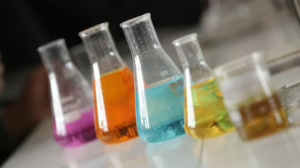





Add Comment